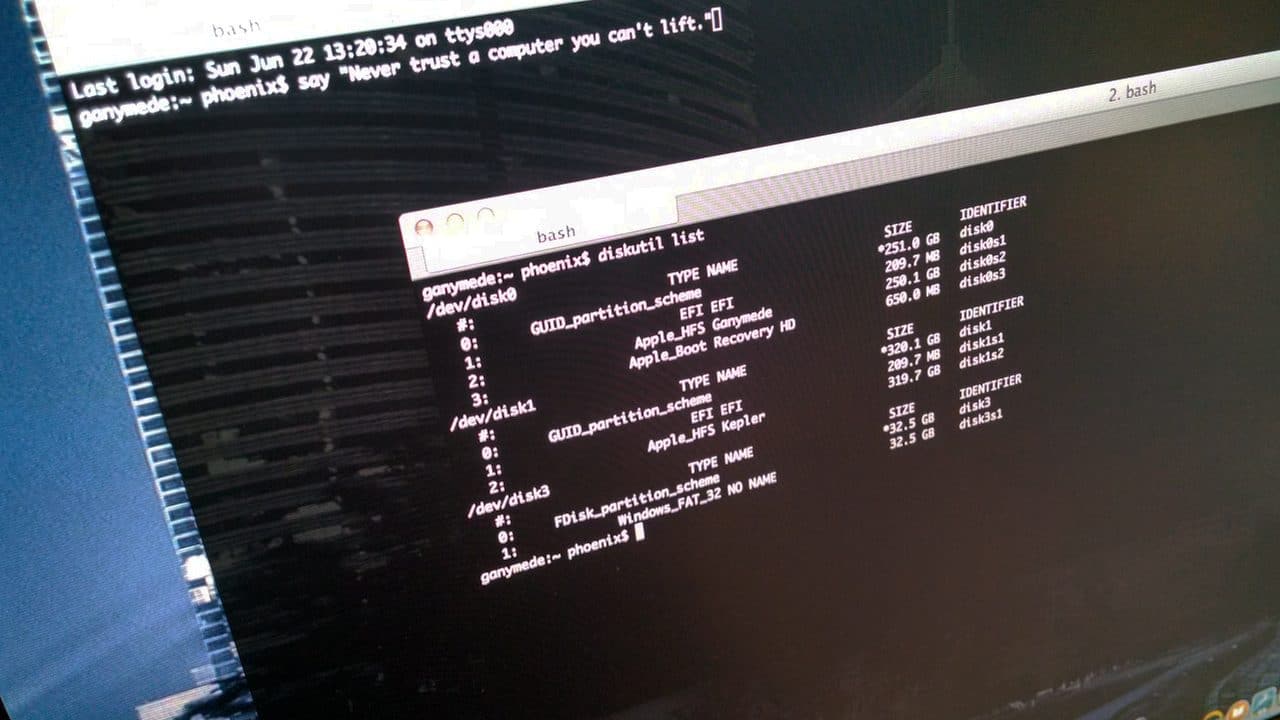November 20, 2018November 20, 2018 by Andrew Fore
At work we use Atlassian JIRA as our ticket system internally between the various teams. I have various widget setup to watch predefined JIRA filters on my dashboard, however I wanted to be able to sort the widget content by multiple columns.
By default the filter only sorts on a single column, however you can add a second sort by using Atlassian query language syntax like so:
assignee = afore AND resolution = Unresolved ORDER BY priority DESC, updatedDate DESC example of the filter after applying the new sort order Categories General, Tips n TricksTags jiraLeave a comment May 15, 2018May 15, 2018 by Andrew Fore
example of the filter after applying the new sort order Categories General, Tips n TricksTags jiraLeave a comment May 15, 2018May 15, 2018 by Andrew Fore
During the installation and setup of my new Solaris 11 Automated Installer host, I ran into a situation where even though I was specifying both the origin to remove AND the origin to add, the OS refused to allow me to perform both options in the same command. While you should be able do this, I ended up having to remove the default system configured publisher and then adding the new local IPS repository as the publisher.
This is what the default publisher was configured for:
root@qa1jumpstart01:~# pkg publisher
PUBLISHER TYPE STATUS P LOCATION
solaris origin online F http://pkg.oracle.com/solaris/release/
root@qa1jumpstart01:~# pkg publisher solaris
Publisher: solaris
Alias:
Origin URI: http://pkg.oracle.com/solaris/release/
SSL Key: None
SSL Cert: None
Client UUID:
Catalog Updated: October 6, 2015 02:41:00 PM
Enabled: Yes
Here is the command that was part of the Oracle guide How to Get Started Customizing and Configuring Systems Using the Automated Installer in Oracle Solaris 11.1 which didn’t work for me:
root@qa1jumpstart01:~# pkg set-publisher –G '*' -g http://10.202.46.80 solaris
pkg set-publisher: only one publisher name may be specified
Usage:
pkg set-publisher [-Ped] [-k ssl_key] [-c ssl_cert]
[-g origin_to_add|--add-origin=origin_to_add ...]
[-G origin_to_remove|--remove-origin=origin_to_remove ...]
[-m mirror_to_add|--add-mirror=mirror_to_add ...]
[-M mirror_to_remove|--remove-mirror=mirror_to_remove ...]
[-p repo_uri] [--enable] [--disable] [--no-refresh]
[--reset-uuid] [--non-sticky] [--sticky]
[--search-after=publisher]
[--search-before=publisher]
[--search-first]
[--approve-ca-cert=path_to_CA]
[--revoke-ca-cert=hash_of_CA_to_revoke]
[--unset-ca-cert=hash_of_CA_to_unset]
[--set-property name_of_property=value]
[--add-property-value name_of_property=value_to_add]
[--remove-property-value name_of_property=value_to_remove]
[--unset-property name_of_property_to_delete]
[--proxy proxy to use]
[publisher]
I tried several different variations of the one line command, however I was met with the same lack of success. In order to achieve the desired result where the local IPS repository was set up for publisher name solaris I had to do an unset of the existing repo and then a set to configure my new repo.
root@qa1jumpstart01:~# pkg unset-publisher solaris
Updating package cache 1/1
root@qa1jumpstart01:~# pkg publisher
PUBLISHER TYPE STATUS P LOCATION
root@qa1jumpstart01:~# pkg set-publisher -g http:// solaris
root@qa1jumpstart01:~# pkg publisher
PUBLISHER TYPE STATUS P LOCATION
solaris origin online F http:///
root@qa1jumpstart01:~# pkg publisher solaris
Publisher: solaris
Alias:
Origin URI: http:///
SSL Key: None
SSL Cert: None
Client UUID:
Catalog Updated: October 6, 2015 07:45:07 PM
Enabled: Yes
Categories Solaris, Tips n TricksLeave a comment January 8, 2017August 28, 2016 by Andrew Fore 
As part of the rebuild on my Plex Media Server using CentOS 7, I had intended to configure Google Authenticator but hadn’t gotten around to doing it yet. As I got into the process recently I discovered that many of the steps that I had used when configuring my CentOS 6 Digital Ocean droplet were out of date to the point of uselessness.
I also discovered that most of the guides that I found either relied on the older 1.0 code release which was also outdated or used a unknown RPM repo. As such I decided to write up the process that I followed to use the code downloaded from the official GitHub repository.
NOTE: If you are doing this in an enterprise setting, it is likely that your company has particular settings and restrictions that you may need to adhere to (e.g., not running things as the root user). Also, please note that all of my examples use the CentOS defaults unless specifically noted.
Read moreConfigure Google Authenticator on CentOS 7
Categories CentOS, Google, Security, Tips n Tricks, UncategorizedTags 2FALeave a comment October 5, 2015 by Andrew Fore
One of the tools that I use on a regular basis to test network connectivity updates is the “z” option of netcat. Apparently when RedHat rolled out the latest version of their distribution of RedHat Enterprise Linux (RHEL) they decided to move to using the nmap-ncat package instead of the nc package. The command options a very different.
So when attempting to test single port like I would have under previous releases I now use the following syntax:
# echo | nc -w1 $host $port >/dev/null 2>&1 ;echo $?
If the result that is returned is a zero then you have successfully connected to the remote host on the desired port. This also applies to CentOS 7 since it is a “clone” or copyleft port of the RHEL7 binaries.
Categories CentOS, Linux, Tips n Tricks, Uncategorized1 Comment June 10, 2015 by Andrew Fore
Today when attempting to figure out why Google Hangouts would not start on my Mac after the application was re-enabled due to a permissions change, I noticed a large number of messages like the following:
6/10/15 10:20:14.000 AM kernel[0]: Google Chrome He (map: 0xffffff804da160f0) triggered DYLD shared region unnest for map: 0xffffff804da160f0, region 0x7fff99a00000->0x7fff99c00000. While not abnormal for debuggers, this increases system memory footprint until the target exits.
After some research I found that this is a reported issue in the bug tracker for Chromium. At first I thought that maybe this was the cause of the problem I was having but that turned out to not be the case, simply removing the Hangouts app in Chrome and re-adding it fixed my issue. However, the sheer number of these errors makes the log a bit unwieldy. It turns out that there is a way to hide all these messages (thanks to the commenter in the Chromium bug thread!):
[code language=”bash” light=”true”]sudo sysctl -w vm.shared_region_unnest_logging=0[/code]
While it doesn’t help at all with Chrome’s memory issues or other UI issues on Mac OS X, it is rather nice to hide all those spurious messages from the system log.
Categories Mac OS X, Tips n Tricks, UncategorizedLeave a comment June 10, 2015 by Andrew Fore
While logging into one of the Linux jump boxes at work today, it occurred to me that while I recently got notified about my password expiration from our Active Directory farm, I had no idea when my Linux password would expire or what the password life was.
To find out this information you can easily use the chage command.
Here is what the output looks like:
[code language=”bash”][user@myserver ~]$ chage -l user Last password change : Apr 09, 2015 Password expires : Jul 08, 2015 Password inactive : never Account expires : never Minimum number of days between password change : 1 Maximum number of days between password change : 90 Number of days of warning before password expires : 7
[/code]
It may seem like such a simple thing to do, but knowing when your password expires can be a lifesaver on occasion.
Categories Linux, Tips n Tricks, Uncategorized1 Comment January 8, 2017March 17, 2015 by Andrew Fore 
In my day job as a Systems Engineer I frequently find myself switching between different UNIX and Linux distributions. While many of the commands exist on both sides of the aisle, I often find vast differences in the command line parameters that can be consumed by a given command when used in, for example, Linux vs Solaris.
Recently I came upon this again with the need to easily ferret out the majority consumer of drive space on a Solaris 10 system. While we did have the xpg4 specification support available, the du command was still missing my favorite option “max-depth”.
In Linux I use this to limit the output to only the current directory level so that I don’t have to face to possibility of wading through a tremendously large listing of sub-directories to find the largest directory in the level I am in. Unfortunately, in Solaris, even with xpg4, the du command doesn’t have this option, so my solution was to pipe the results through egrep and use that to filter out the sub-directories.
Read moreSolaris Tip of the Week: a better du experience
Categories Linux, Solaris, Tips n Tricks, Uncategorized1 Comment March 2, 2015 by Andrew Fore
If you are a Safari user then you are likely used to the “reader mode” which disables all the extra graphical stuff and focuses the view on the content of the article. Thanks to a tip from Google Plus user Francois Beaufort, here’s how to enable it on the desktop (in Windows at the very least, I haven’t tried in any other OS).
If you’re on desktop, playing with it is as easy as running chrome with the –enable-dom-distiller switch. Once it’s done, you’ll notice a new “Distill page” menu item.
Hopefully this will make it to mainstream with a nice icon.
Categories Google, Tips n Tricks, UncategorizedLeave a comment